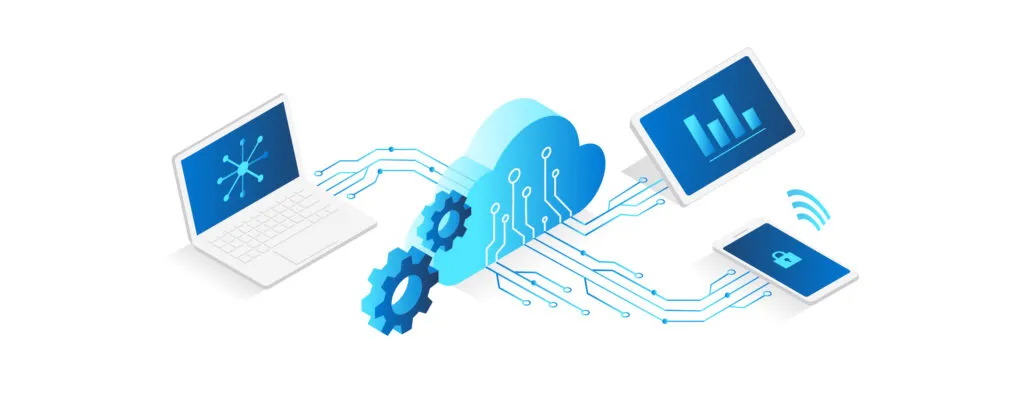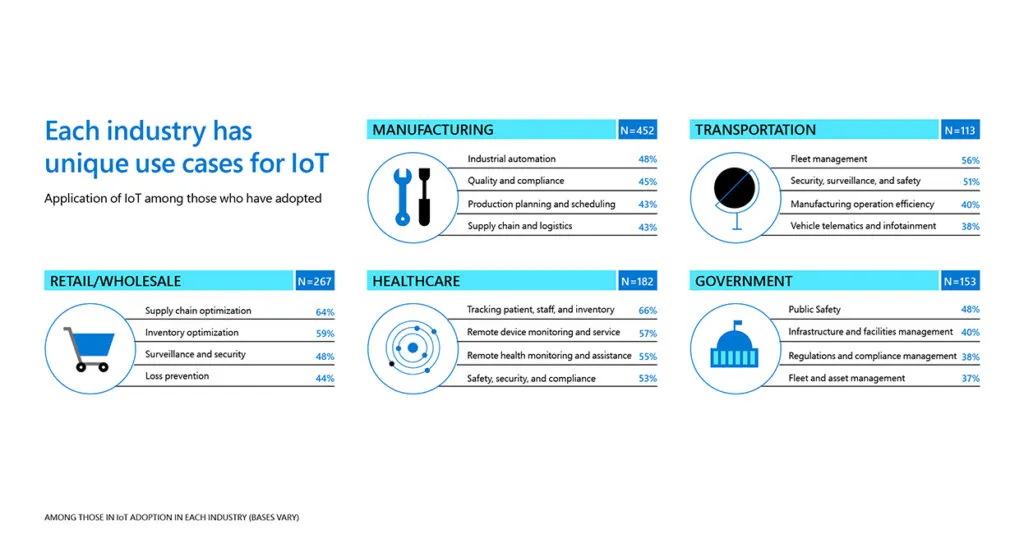
How companies are speeding their IoT revolution

This blog is the fourth in a series highlighting our newest research, IoT Signals. Each week will feature a new top-of-mind topic to provide insights into the current state of IoT adoption across industries, how business leaders can develop their own IoT strategies, and why companies should use IoT to improve service to partners and customers.
The Internet of Things (IoT) revolution is well underway. Smart consumer technology may generate most of the media coverage and excitement. However, commercial applications of IoT are quietly transforming industry, unlocking significant value for companies and their customers. In our IoT Signals research report, we surveyed 3,000 key enterprise decision-makers and found that IoT adoption is slated to grow nine percent, from 85 percent to 94 percent, by 2021. Companies see increased IoT investment and use cases as critical to maintaining industry competitiveness and fueling growth.

Industry priorities with IoT use cases
So what are companies focused on now? According to IoT Signals:
- Manufacturing: Manufacturers are tackling industrial automation projects (48 percent), a precursor for major IoT initiatives. They’re also interested in using IoT to ensure product quality and compliance (45 percent), reducing costs associated with returns and recalls. They’d like to leverage IoT to fine-tune production planning and scheduling (43 percent) to optimize asset usage and coordinate supply chain and logistics (43 percent) with partners. Finally, they’re applying IoT to plant safety and security (33 percent) to protect IP and assets from diversion and theft.
- Retail: Retailers and wholesalers are moving faster than ever to take products to market and align inventory to match changing customer demand and target new demographics. That’s why retailers are most interested in applying IoT to supply-chain optimization (64 percent), followed by inventory optimization (59 percent). Retailers are also keen to use IoT for surveillance and security (48 percent) and loss prevention (44 percent). Finally, retailers would like to use IoT to optimize energy (40 percent) across their networks of stores, factories, and distribution centers.
- Transportation: Transportation companies manage large fleets of vehicles and equipment, which are costly to fuel, operate, repair, and protect. They plan to apply IoT to fleet management (56 percent) and security, surveillance, and safety applications (51 percent). Because transportation fleets are often in-house or contracted resources that take manufacturers’ goods to market, industry leaders want to streamline manufacturing operations (40 percent). Transportation executives also would like to use IoT to develop vehicle telematics and infotainment services (38 percent) to add value to services and increase ROI. Additionally, predictive maintenance (33 percent) would reduce expensive repairs on million-dollar trucks, construction equipment, and other vehicles.
- Government: Government leaders are interested in using IoT for public safety programs (48 percent), such as policing and emergency services. They’d also like to apply IoT to infrastructure and facilities management on an industrial scale (40 percent). Government agencies that oversee industry companies and manage their adherence to requirements are keen to apply IoT to regulations and compliance management (38 percent). Like transportation managers, they’d like to optimize fleet and asset management (37 percent). There also are IoT use cases for incident response (29 percent), such as security alerts and evacuations.
- Healthcare: Healthcare executives see huge potential for applying IoT to monitoring patients, staff, and inventory such as equipment and medication (66 percent). They’d like to use IoT for remotely monitoring and servicing devices (57 percent)—such as million-dollar surgical robots. In addition, they want to use IoT to remotely monitor and assist patients with health concerns (55 percent)—such as pushing alerts to the IoT-enabled devices patients wear for disease management. Leaders also plan to apply IoT to safety, security, and compliance (53 percent) to manage patient flows in hospitals and clinics. Further, they see opportunities to use IoT in facilities management (42 percent), such as heating, cooling, and lighting.
5G will enable broader IoT
Companies are also getting ready for 5G. Ultrafast network speeds will unleash pervasive connectivity, enabling billions of devices across networks and at the edge to connect and communicate easily and rapidly. They’ll also enable analytics to be performed on huge data sets, and AI and machine learning to get smarter at scale.
By facilitating this level of connectivity and data analysis, 5G will enable organizations to orchestrate complex IoT-powered business processes, such as optimizing the production cadence on factory floors across plants globally, saving energy in smart buildings across campuses and complexes, improving the flow of traffic in congested cities, increasing crop yields across large-scaling farms, enabling precision medicine and patient care, and more.
As companies’ experience with IoT grows, they are weaving the technology and its capabilities into the heart of their business. Today’s gains sow the seeds for higher gains tomorrow as companies connect more business processes; use analytics to predict future needs; and leverage 5G network speeds, automation, AI, and machine learning to sense and respond to market dynamics.
Learn more about how global companies are using IoT to drive value by downloading the IoT Signals report and reading our Transform Blog on IoT projects companies such as ThyssenKrupp, Bühler, Chevron, and Toyota Material Handling Group are driving.
And in case you missed them, read the other posts in our series on the IoT Signals report:
- IoT Signals report: IoT’s promise will be unlocked by addressing skills shortage, complexity and security
- How manufacturers became world leaders in IoT adoption
- Solve the IoT security paradox to unleash innovation
- Addressing the coming IoT talent shortage
- How to win with IoT in the digital marketplace




